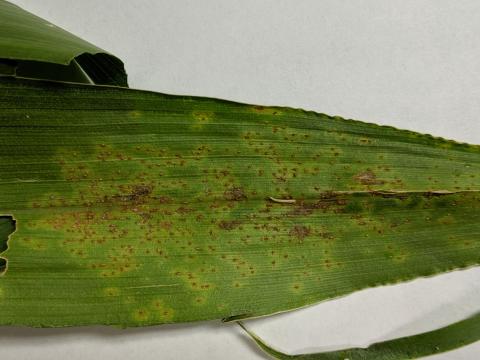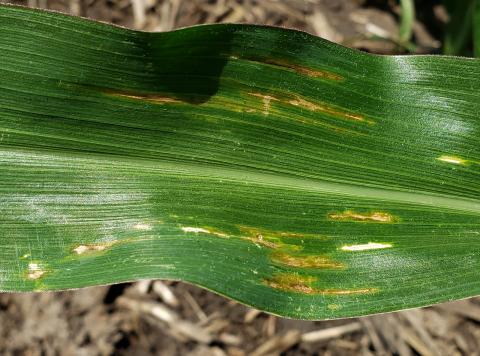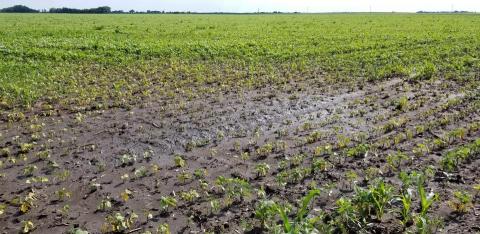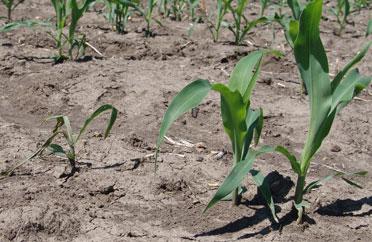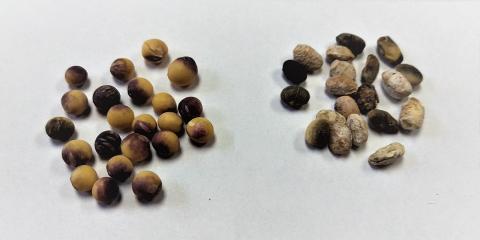Southern Rust of Corn Confirmed in Southeast Nebraska
July 16, 2020
Southern corn rust was confirmed on corn leaf samples from Fillmore, Nuckolls and Johnson counties in southern Nebraska this week. Warm, humid conditions may favor disease development, so fields in this area should be monitored frequently in the coming weeks.
Diseases to Watch for in Flooded Crops
July 11, 2019
Producers, consultants, and agronomists should be alert to the potential for increased disease pressure in fields that experienced flooding in March or more recently. Here are some of the diseases you're most likely to see.
Bacterial Leaf Streak of Corn in Nebraska
June 27, 2019
Bacterial leaf streak of corn is increasing as Nebraska. When scouting, growers should take time to differentiate it from gray leaf spot as fungicides will not work on bacterial leaf streak but will help control gray leaf spot.
Using Symptom Distribution to Identify Problems and Guide Management
June 24, 2019
Many factors can cause the emergence issues growers have been seeing in some corn and soybean fields. One of the easiest ways to predict whether the emergence issues are due to a soilborne pathogen(s) or agronomic factors is to look at where symptoms appear in the field.
Response of Germinating and Early Season Soybeans to Flooding
May 30, 2019
Injury to germinating and seedling soybean from flooding depends on several factors, including soybean growth stage, flood duration, and air and soil temperature and varies the varieties. Pythium and Phytophthora are two diseases to scout for after flooding.
New CW Podcast on Corn Seedling Diseases
May 8, 2019
Michael Sindelar talks with Extension Plant Pathologist Tamra Jackson-Ziems about common corn seedling diseases, what to watch for in the field, and how to collect and submit quality samples for diagnosis.
New CW Podcast on Soybean Seedling Diseases
April 26, 2019
Tune in to this CropWatch podcast on seed and early season issues with soybean diseases. Is your seed selection or treatment well matched with historical problems in the field? What should you be watching for at emergence and what are your management options.
Soybean Seed Germination Concerns
February 13, 2019
Average germination rates of new crop soybean being tested by the Nebraska Crop Improvement Association are lower than in recent years. Growers are urged to check the germination rate for their soybean seed and adjust planting rate and use of fungicide treatments accordingly.


